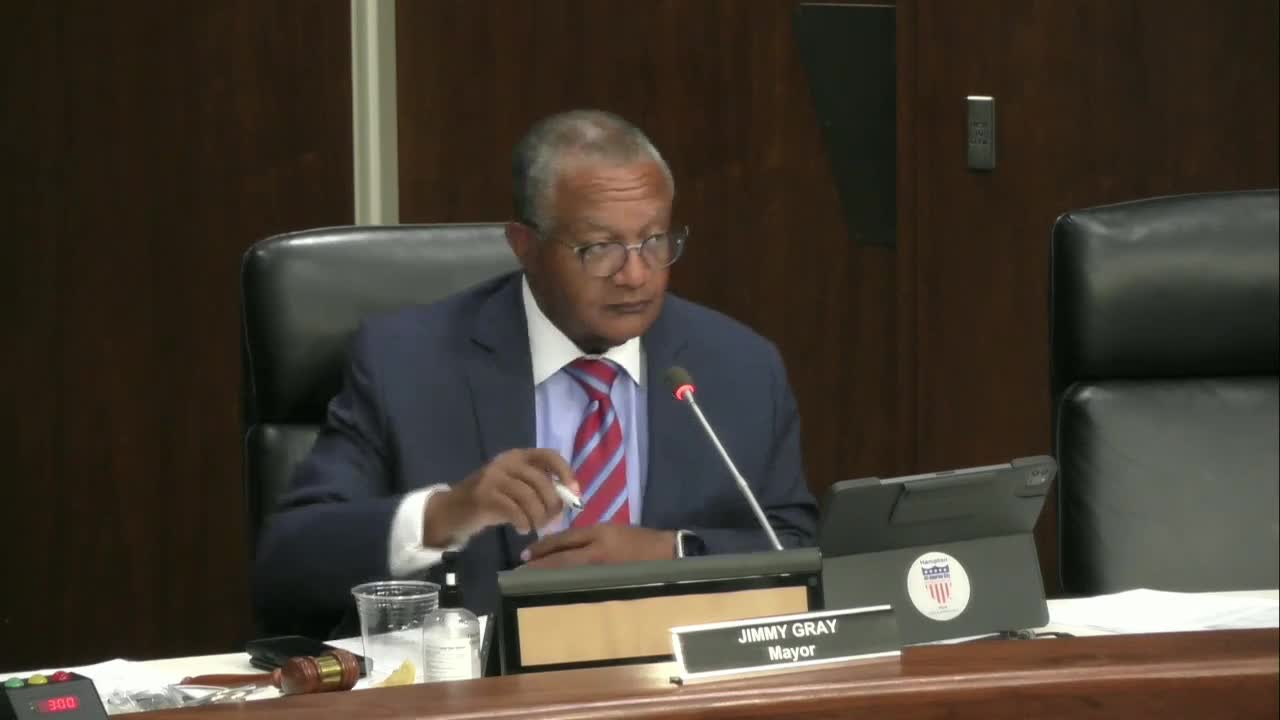Community members oppose high-density rezoning of former Woods Orchard property
July 09, 2025 | Hampton City (Independent City), Virginia
This article was created by AI summarizing key points discussed. AI makes mistakes, so for full details and context, please refer to the video of the full meeting. Please report any errors so we can fix them. Report an error »

During the recent Hampton City Council meeting, community members voiced strong opinions regarding a proposed rezoning application for the former Woods Orchard property. The discussion highlighted a significant divide among residents about the future of this site, which is currently under consideration for high-density apartment development.
Several speakers, including local resident Ms. Marks, expressed their opposition to the project, arguing that the construction of three and four-story buildings would negatively impact the aesthetic and property values of the surrounding single-family homes. Marks emphasized that while the proposed apartments are marketed as affordable, the financial requirements to qualify for these units could exclude many residents. She pointed out that the minimum income needed to qualify for a loft-sized apartment is approximately $47,700, raising concerns about the long-term stability that such developments could bring to the community.
Edward Carden, another resident, echoed these sentiments, citing a lack of support for the rezoning during community meetings. He noted that out of 148 surveys collected, 130 respondents opposed the high-density development. Carden urged the council to consider alternative sites for such projects, suggesting that the city-owned land nearby could be a more suitable location for development.
In contrast, former Mayor Donnie Tuck spoke in favor of the rezoning, recalling his previous interactions with the Whitmore Company, which is behind the proposed project. Tuck argued that the development could serve as a positive statement for the Phoebus area and contribute to the city's growth.
The council's deliberation on this matter reflects broader community concerns about housing density, property values, and the types of developments that best serve the needs of Hampton residents. As discussions continue, the council faces the challenge of balancing development interests with the desires of the community. The outcome of this rezoning application will likely have lasting implications for the neighborhood and its residents.
Several speakers, including local resident Ms. Marks, expressed their opposition to the project, arguing that the construction of three and four-story buildings would negatively impact the aesthetic and property values of the surrounding single-family homes. Marks emphasized that while the proposed apartments are marketed as affordable, the financial requirements to qualify for these units could exclude many residents. She pointed out that the minimum income needed to qualify for a loft-sized apartment is approximately $47,700, raising concerns about the long-term stability that such developments could bring to the community.
Edward Carden, another resident, echoed these sentiments, citing a lack of support for the rezoning during community meetings. He noted that out of 148 surveys collected, 130 respondents opposed the high-density development. Carden urged the council to consider alternative sites for such projects, suggesting that the city-owned land nearby could be a more suitable location for development.
In contrast, former Mayor Donnie Tuck spoke in favor of the rezoning, recalling his previous interactions with the Whitmore Company, which is behind the proposed project. Tuck argued that the development could serve as a positive statement for the Phoebus area and contribute to the city's growth.
The council's deliberation on this matter reflects broader community concerns about housing density, property values, and the types of developments that best serve the needs of Hampton residents. As discussions continue, the council faces the challenge of balancing development interests with the desires of the community. The outcome of this rezoning application will likely have lasting implications for the neighborhood and its residents.
View full meeting
This article is based on a recent meeting—watch the full video and explore the complete transcript for deeper insights into the discussion.
View full meeting
